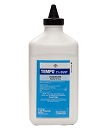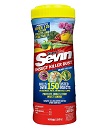Tempo Dust Vs Sevin Dust
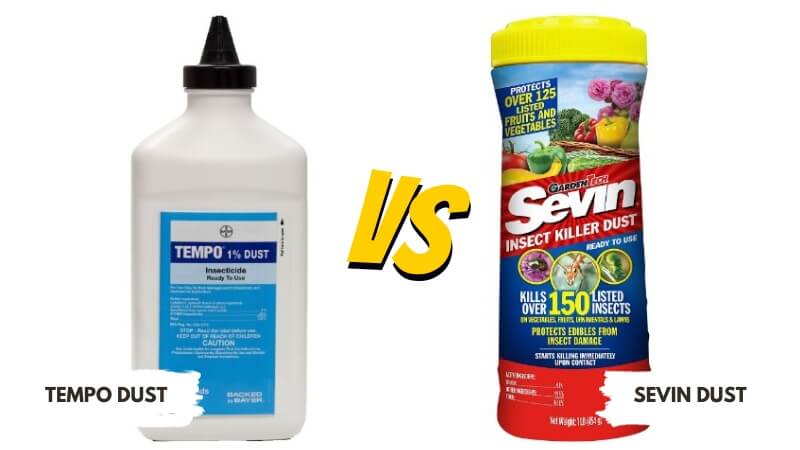
The main difference between Tempo Dust and Sevin Dust is that Tempo Dust contains the active ingredient cyfluthrin while Sevin Dust contains carbaryl.
Cyfluthrin is a synthetic pyrethroid that provides quick knockdown and long residual control. Carbaryl is a carbamate insecticide that offers broad-spectrum contact killing but shorter residual control than cyfluthrin.
Tempo Vs Sevin Dust
To understand the differences easily, take a quick look at this comparison table.
Active Ingredients
The active ingredient in Tempo Dust is cyfluthrin, which makes up 1% of the formulation. Cyfluthrin is a synthetic pyrethroid insecticide known for its quick knockdown and long-term residual control.
It works by disrupting the insect’s nervous system. The active ingredient in Sevin Dust is carbaryl, which makes up 5% of the formulation.
Carbaryl is a broad-spectrum carbamate insecticide that works by inhibiting an enzyme in the insect’s nervous system, causing paralysis and death.
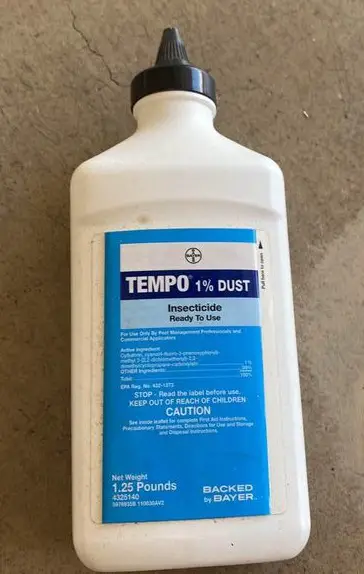
Target Pests
Sevin Dust can control over 65 different insect pests, including Japanese beetles, flea beetles, stink bugs, aphids, ants, and more. It is labeled for use on fruits, vegetables, ornamentals, and lawns.
Tempo Dust is particularly effective against stinging insects like bees, wasps, and hornets, as well as pests like ants, roaches, and bedbugs. It provides control of flying and crawling insects.
How it Works
Both Tempo Dust and Sevin Dust work by disrupting the insect’s nervous system, leading to paralysis and death. Tempo Dust works on contact and provides extended residual control while left undisturbed.
Sevin Dust also works on contact but has shorter residual control than Tempo Dust. It must come into direct contact with insects to be effective.
Indoor or Outdoor
Tempo Dust can be used both indoors and outdoors, while Sevin Dust is primarily used outdoors. Tempo Dust is applied in cracks, crevices, voids, and wall voids in and around structures.
Sevin Dust is applied to ornamentals, fruits, vegetables, lawns, and foundations but not for indoor use.
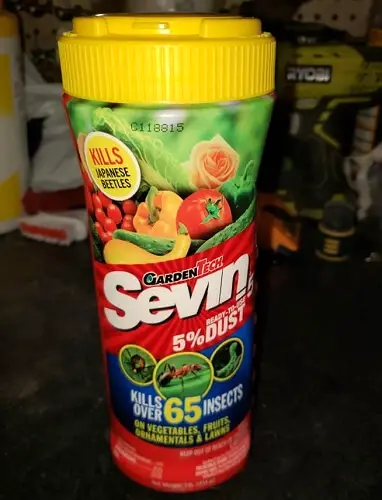
Coverage Area
The suggested application rate for Tempo Dust is 0.5 to 1 lb per 1,000 sq ft. For Sevin Dust, the application rate is 4 lbs per 1,000 sq ft for lawns and 0.5 to 1 lb per 1,000 sq ft for gardens. This allows Tempo Dust to cover a larger area.
Application Areas
Tempo Dust can treat indoor and outdoor areas, including cracks, crevices, voids, and surfaces. Its dust formulation reaches hidden harborage areas.
Sevin Dust is applied more broadly to outdoor plants, trees, edibles, and lawns as a contact pesticide. It does not reach cracks and crevices like Tempo Dust.
Rainproof
Sevin Dust needs to be applied on calm days with no rain expected for 48 hours. Tempo Dust can withstand exposure to some moisture but is not labeled for application to wet areas or mixing with water.
Residual Control
One major advantage of Tempo Dust is its long residual control, remaining active for up to a year if left undisturbed. This makes it very effective against pests that hide and harbor in voids and cracks.
Sevin Dust does not offer the same lasting residual control as Tempo Dust but still provides broad-spectrum contact activity.
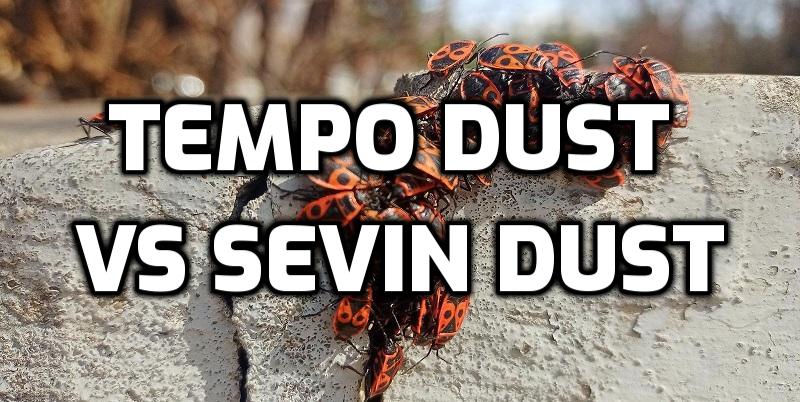
Odor & Staining
Both Tempo Dust and Sevin Dust have low odor properties and are non-staining formulas. Tempo Dust is specifically designed for indoor use with little odor or staining. Sevin Dust has a slight odor but still less than many other outdoor insecticides.
Application Equipment
Tempo Dust is typically applied with a power duster for precision placement and coverage. Sevin Dust usually uses a shaker can or sack for broadcasting over lawns and garden areas. The method matches the application area.
Safe for Pets
When used as directed, both Tempo Dust and Sevin Dust are considered safe for use around pets. The label guides proper product use to avoid any risks to children or pets.
Repeat Application
Tempo Dust can be applied as needed when pests are seen, around every 7-10 days. Sevin Dust can be applied up to once per week but not more than seven times per year.
Tempo Dust offers better ongoing control, while Sevin Dust is more limited.
Our Observation
After review, Tempo Dust and Sevin Dust have distinct uses. Tempo Dust’s cyfluthrin offers long-lasting residual control ideal for cracks and voids where pests harbor. It can provide months of undisturbed effectiveness.
Sevin Dust delivers quick, broad-spectrum control through contact with its carbaryl ingredient. It’s optimal for large outdoor areas like lawns and gardens but has shorter residual activity than Tempo.
Consider pest type, treatment areas, and reapplication needs. Tempo suits enclosed spaces and hiding pests; Sevin treats open, outdoor areas. Choosing the proper dust provides effective insect control tailored to your needs.

James E. Butkovich, Pest control maven with a knack for eco-friendly & Chemical solutions. Blogger with a mission to make homes pest-free, one post at a time.
